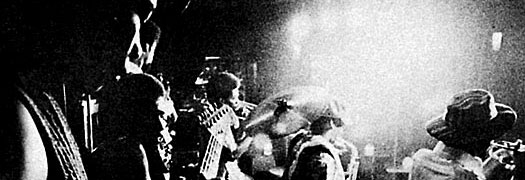
Features | Lists
By The Staff
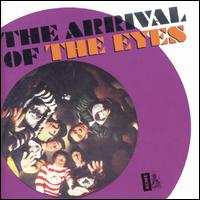
The Eyes
The Arrival of the Eyes EP
(Mercury; 1966)
The Eyes’ reputation as one of the baddest, most intense mod or freakbeat outfits in the UK is predicated entirely on these four tracks: sides A and B of their first two singles, all four collected on this 1966 EP. They’re every bit as noisy, distorted, and chocked with psychedelic feedback as the Who’s early singles (the connection is fleshed out in “My Degeneration,” a tribute to The Who that’s as much satire as it is homage), and just as focused by taut hooks and sweet harmonies. “When the Night Falls” and “I’m Rowed Out” in particular represent five and a half minutes of the toughest mod growl that can still be classified as pop music.
Brawny crash chords and brainy lyrics—still rhyming couplets about girls, but with the vivid imagery to keep it interesting—stretch the appeal of this band across ‘60s geeks and guitar jocks alike. The start-stop riff of “I’m Rowed Out” tickles that same bone that makes you air rock to “Making Time” and “’Till The End of The Day.” What elevates these from simple guitar jams to decidedly eerier rock sneers is the dark arrangements with plenty of breathing room on the one hand and the laser-precise tone choice on the other. In much of the verse in “When The Night Falls” there’s one guitar chord every eight beats; some feedback and tom toms fill the void, but it’s still an atypical restraint that allows the harmonica at 1:13 to not just embellish but drive the instrumental break. At this point Terry Nodler’s wonderfully pissed-off whine is just gravy.
The story of the Eyes, all talent and promise off the top, sputters out in a muddle of bad artistic and business decisions. Their third single was a cover of the Everly Brothers “Man with Money,” followed by The Beatles’ “Good Day Sunshine,” and an LP of Rolling Stone covers. No one paid much mind, and the band slid into obscurity until picked up by collectors and reissued by Bam Caruso (the fucking great reissue label) in the ‘80s. Their EP remains the single best “freakbeat” release, and for good reason: they manage to kick ass while being genuinely freaky.
David Ritter
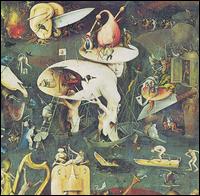
Pearls Before Swine
One Nation Underground
(ESP-Disk; 1967)
Edging out the RZA for “best use of musical lisp ever” is a pretty sterling achievement, but then again, so is “Another Time.” Critics tend to prattle on about lyrical eccentricities when discussing Tom Rapp’s work—which is a valid point, I mean, the guy sounds like a demented Leonard Cohen—but I’ve long thought the main draw here is just how interesting the thing sounds.
The not-so-subtle shifts in tempo render the album a mess, of sorts, with cohesion hiccupping slightly on a number of occasions (the lilting “Regions of May” leading into the relatively cacophonous “Uncle John” makes little sense), but the ten songs here are a fascinating display and exploration of “psych rock” as a genre, stretching the corners to places much more adventurous than “hey, let’s throw an organ over this shit.” “(Oh Dear) Miss Morse” features a careful banjo and the closest Rapp ever came to a pop hook, as “fuck” is spelled out in morse code. “I Shall Not Care” alternates between 13th Floor Elevators-esque franticness, quiet folk, and indescribably, shifting noise that sounds like something else entirely (industrial?).
And yes, Tom Rapp’s oddly affecting lyrics are buried within these contrasting arrangements, often giving off the air of stepping into an esoteric conversation already in progress. The meanings are confounding at times (“Another Time” is about a car crash… really?), but, much like the music that houses them, they often seem an exercise in stringing together intriguing imagery, sentiments, and phrases. They serve as perfect components to an album that’s main draw may simply be it’s compelling nature rather than its startling pop songcraft or tremendous musicianship. I would label the album better than the sum of its parts were it not simply an erudite history geek and his high school buddies smoking Winstons and attempting to birth something like the sonic equivalent of a striped, fluorescent scrambled egg. It’s exactly that and awesome for it.
Colin McGowan
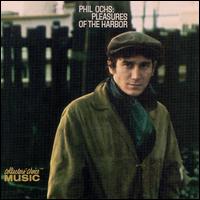
Phil Ochs
Pleasures of the Harbor
(A&M; 1967)
Forget Frank Zappa or Captain Beefheart, here’s the most Brechtian record of the ’60s. While musically Pleasures of the Harbor is full of the lush symphonic arrangements of classic pop, lyrically Ochs took to his words with a heart despairing, seething with sarcasm, bitterness, and disillusionment. Like some Bizarro Nick Drake, Ochs wraps this dark vision in music that’s often bouncy and upbeat, especially on the Tin Pan Alley throwback “Outside of a Small Circle of Friends” and the Dixieland/ragtime-influenced “Miranda,” both used as platforms for Ochs to rail against political and moral apathy. If anything, however, these full-bodied arrangements make the message even more difficult to swallow: the songs sound frantic—almost demented—and a far cry from the immersive songs of his contemporaries. In fact there’s few artists of this era, in my opinion, who could truly shatter passive reception like Ochs: Dylan, for all his dark and political subject matter, always carried an air of detachment, while almost everyone else bought into rock n’ roll’s narcotic potential.
Still, there’s no denying that the musical accomplishments are often stunning. “I’ve Had Her” is a baroque masterpiece, even if, like “Miranda,” it carries an unfortunate streak of misogyny. And a handful of lighter moments do occur, mostly on “The Party”—which sounds like it could’ve been inspired by Renoir’s The Rules of the Game—where the image of Ochs as he “crawl[s] beneath the rug to retune [his] piano” confirms that he, like anyone else, often uses music as a safe haven from the hypocrisies of the outside world. But if the bright arrangements really were meant to cushion the blow of the lyrics then there’s no accounting for the fury of closer “The Crucifixion,” an epic tragedy supposedly inspired by the lives of Jesus Christ, John F. Kennedy, and Dylan that still stands as one of the most relevant, poetic, inventive, and defiantly ahead-of-its-time pieces of music from the entire decade. To say the track is “apocalyptic” is to put it mildly: Ochs layers more and more horns and strings until the song is almost drowned in dissonance, while lyrically he manages to perfectly illustrate (even through the most surreal and chaotic imagery) the perverted desire of humanity to have someone be simultaneously hero and scapegoat. If there’s any positive light to be shone on this brooding downer, it’s with the couplet of the opening track: “Cross my heart / and I hope to live.” For Ochs, a life lived uncritically isn’t worth living.
Joel Elliott

The Incredible String Band
The 5000 Spirits or the Layers of the Onion
(Elektra; 1967)
Having been a nerdy Beatles and Macca fan, I first came across this album knowing it had been cited as being one of Paul McCartney’s favorite albums of 1967. Let’s back-track and really think about that. His favorite album of 1967. This is the year of Piper at the Gates of Dawn, Safe as Milk, The Velvet Underground and Nico, Nina Simone Sings the Blues, Younger Than Yesterday, The Who Sell Out, and Axis: Bold as Love. OK, got that?OK, now think about this: THE MAN WHO DROVE BRIAN WILSON INTO INSANITY WITH REVOLVER THE YEAR BEFORE AND THEN RELEASED SGT. FUCKING PEPPER’S LONELY HEART’S CLUB BAND THINKS THIS ALBUM IS BETTER THAN ANYTHING HE’D HEARD THAT YEAR. Surely, this album has to be the best album ever written. After listening to this the laugh of your first born baby has as much effect as a horse’s fart and all life is rendered meaningless as you try to pierce your eardrums so they will never be sullied by any other sound ever again…Well, to be fair, this isn’t quite that album but it’s still very good and I can understand McCartney’s tastes.
I didn’t always though. As a 19-year-old, having had no real frame of reference, this album was an unbearable dirge of twee fuckery sung by two patchouli-oiled hippies in ridiculous hats and annoying voices. But things were very different nine years ago and back then I think most of you would have had a similar reaction. Now, in forgiving and loving 2008, the musical climate is very different indeed. Thank God for Devendra Banhart and Animal Collective. They will act as the crowbar for which I will gain leeway to propel this album from obscurity into being one of your favourites of all time.
At 50 minutes, 5000 Spirits is a sprawling freak that winds and coils like ivy tendrils through a fusion of folk, Arabian instrumentation, sitars, and blues, throwing caution to trivialities such as metre, tempo, or structure. The album feels lucid and organic as Mike Heron and Robin Williamson bounce vocal duties back and forth and, despite only having picked up many of the exotic instruments from a recent holiday, playing with confidence and palpable glee. There is a satisfying silliness to a lot of the album, getting as much childish enjoyment from the anthropomorphising of clouds as getting dating advice from a talking hedgehog. But where it may seem like the most unbelievable flight of fancy, there is a wry sense of self-awareness with “Way Back In The 60s,” a song from a man in the future talking about the band’s present as the good old days, and a well-tread, rootsy feel in the “Blues for the Muse.” And it’s this vivid spectrum of colours which the writer of “Helter Skelter” and “Blackbird” fell in love with. It’s just so…_very_ everything.
Danny Roca

Morton Subotnick
Silver Apples on the Moon
(Nonesuch; 1967)
Subotnick’s strange noises were a product of techonological shifts; his partnership with Don Buchla (who had recently developed a modular voltage-controlled synthesizer he called the Electric Music Box) allowed him to fundamentally alter how electronic music was conceived. No longer having to rely on waveforms and tape manipulated sounds, Subotnick brilliantly balked contemporary avant-garde conventions by producing a highly rhythmic wash of noises with Buchla’s new toy. Silver Apples of the Moon takes full advantage of stereo recording, too; the synthetic stabs fall across the audio spectrum, engrossing you inside their spacey (and, yeah, admittedly kinda dated) world. But even if this thing sounds cheesy, it’s no more so than the ARP noises on Herbie Hancock’s Sextant; that album was cribbing notes from this for sure.
As a piece, there’s not much conceptually to it beyond what the title suggests, but that’s okay; Subotnick works hard to explore a whole range of moon-ish moods, and the intense middle section of “Part 2” is particularly aweing, even if most Ableton synth plugins could produce what’s going on fairly simply today. For Subtonick it meant 6-day weeks and 12-hour days in the studio tweaking the settings of the Electric Music Box; for us, the thirty minutes of Silver Apples of the Moon is just enchanting.
Mark Abraham
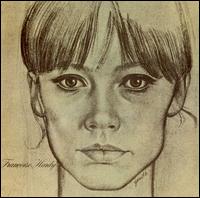
Françoise Hardy
Comment Te Dire Adieu
(Vogue; 1968)
If ever the term “more than just a pretty face” was appropriate: Françoise Hardy had been riding high on the success of several EPs and albums in the early ’60s to secure herself the ungainly term “The Yeh-Yeh Girl from Paris,” due to her Beatle-y pop-rock compositions. Although most of her songs from that period are undoubtedly brilliant (and lovingly compiled in the essential The Vogue Years [2001]), it was in the mid-to-late ’60s that Hardy began to understand her wares, developing her husky, Nico-esque voice on such tremulous string-sweeping ballads as “Le Temps De Souvenirs” and intimate acoustic numbers like “Mon Amie Le Rose.” The time also chronicled a change in production style from tinny four-square pop rock into braver waters. Comment Te Dire Adieu is the first full album where Hardy’s transformation is fully realised. Opening with one of two Gainsbourg tracks, the mood is deceptively sunny; Hardy sounds carefree as she speak-sings through the first of these, the Bacharach-styled bossa nova of the title track (written specifically for her) with its playful brass and ludicrously seductive break. From there on in, save for the only miss (the chirpy ragtime jazz of “Êtonnez-Moi, Benoit…!”), the album is plunged into a state of immovable misery.
Lovers of Marianne Faithful’s pre-heroin-damaged voice will find traces of “As Tears Go By” in the harp-accompanied “Où Va La Chance?” and the wistful “La Mésange” (a French language version of Antonio Carlos Jobim’s “Sabia”). Sadly, Hardy’s songwriting is not ostensibly expressed, only two songs containing writing credits: the Lee Hazlewood country with Michael Nyman strings of “À Quoi Ça Cert?” and the brushed-drum and strings of “La Mer, Les Ètoiles Et Le Vent” that close the album on a relatively hopeful note. Her choice of covers is also equally sombre with a lushly-orchestrated take on Cohen’s “Suzanne” and a downbeat take on Ricky Nelson’s rock’n’roll ballad “Lonesome Town.” The stand-out track, though, is her cover of George Brassen’s “Il N’y A Pas D’Amour Heureux,” based on the Louis Aragon poem of the same name. Loosely translated as “There is no happy love,” the song is a forever-unfolding series of piano arpeggios detailing the horrible torture of love with bitter, damaged cynicism: “Man never truly possesses anything / Neither his strength, nor his weakness, nor his heart / And when he opens his arms / His shadow is that of a cross.” As tragic as Freak Out! (1966) is comic, this is the album to soothe and break the stoniest of hearts.
Danny Roca

Nico
The Marble Index
(Elektra; 1968)
The effect, consciously or not, that The Marble Index has had on music four decades removed is staggering. Granted, a lot of artists were pushing the boundaries of folk in the late ’60s and early ’70s, but it wasn’t until recently that artists seemed ready to come to terms with this gothic/neo-classical/drone-folk behemoth. Perhaps bored with the more distortion-oriented legacy of the Velvet Underground, today large proportions of entire labels—Fonal, Locust, even Kranky—seem devoted to replicating the marriage of acoustic instrumentation, ancient European melodies, and avant-garde textures first attempted here.
Even more surprising is the fact that Nico is known, at best, for an inferior and more conventional debut and, at worst, she’s considered an eccentric who rode the backs of more important artists in order to raise her mystique. Sure Chelsea Girl (1967) is a solid album with more than a handful of great songs, but were it not for her distinctive voice it would merely be the sum of its songwriters, namely: Lou Reed, John Cale, and Jackson Browne. Cale had a huge hand in making The Marble Index what it is, but it took Nico (who, in a complete break from her debut, wrote all the songs here) to give the songs their claustrophobic chill. A decade before “goth rock” was even supposedly initiated, The Marble Index is a total fucking nightmare: on paper “Roses in the Snow” sounds like something romantic, but in Nico’s hands it’s full of horror and splattering blood.
And yet the lyrics only allude to violence; it’s the music and its presentation that make the gore vivid. The extensive use of harmonium may give the album a respiratory feel, but Nico seems intent on capturing the beauty of stasis (read: death): perhaps the brief, immortal moment before or after an act of appalling violence—the “frozen borderline” she sings of in “Frozen Warnings”. And of course, it doesn’t hurt that this is Cale’s finest moment as a producer. The way he makes the organ and percussion bubble and spurt on “Lawns of Dreams” is a beauty; the track defies structure in a way that’s still provocative, and Cale’s textures provide a haunting counterpoint to the measured harmonium and the eerie calm of Nico’s voice. On “Facing the Wind” he cloaks her voice in an inhuman phlanger sound while making percussion out of slamming a piano cover down on the keys (the most sinister sound on the album at least until those deep-bass industrial squalls on “Evening of Light”). Also? That synth from “Frozen Warnings” wouldn’t be “discovered” again until Manuel Gottsching “invented” techno some 14 years later. As perhaps a sterling example of the height of Nico’s artistic relevance, The Marble Index was both a haunting reminder of the past and a forecast of what was to come.
Joel Elliott

July
July
(Epic; 1968)
Although taking its influence from acts such as Pink Floyd and Soft Machine, the songs on July are trim and tightly structured, owing to the band’s early rhythm and blues and skiffle roots. Yet, unlike similar blues-based bands like the Animals and the Small Faces, there are also hints that July’s guitarist Tony Duhig had been lending an ear to the psychedelic scene in Haight Ashbury; squeals of acid guitar and freakouts such as on the sargam-bending “The Way” pepper the path.
The album opens with the double-punch of “My Clown” and “Dandelion Seeds,” the A- and B-sides, respectively, of their debut single (regarded as being one the greatest Brit-psych singles, swapping hands for $1000.) “My Clown” washes in on phased guitar, a drawled pop vocal from Tom Newman, and a thumping kick-drum before freefalling into hammonds through Leslie cabinets and a piercing guitar solo. Its outro tabla leads us into “Dandelion Seeds”’ volume pedal-controlled guitar picking, straight into a time-shifting blues jam while Tom Newman’s voice takes on a reedy quality. “Jolly Mary” repeats “Yellow Submarine”’s trick of melding sound effects and an off-key brass band sample with its nautical theme, but leaves behind the twee sing-along melody and, thankfully, Ringo—Tom’s vocals keeping more in line with Syd Barrett and, at times, John Lennon. The most random song is the rough-neck soul of “You Missed It All,” which starts off like an ESG outtake (are those bottles or a marimba? anyway, it’s screaming to be sampled) before hitting paydirt on a gutsy Peter Green riff.
OK, so the album cover’s terrible but within the questionable casing is a cryogenically frozen London in 1967 and a hypercoloured psychedelic pop album with rumbling rock and an RnB edge. With the heady buzz of reverb and delay all roughed-up by bass-heavy, meaty production, July is, if anything, a definite sister album to Ogdens’ Nut Gone Flake (1967).
Danny Roca
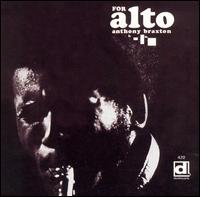
Anthony Braxton
For Alto
(Delmark; 1968)
“I was going to say that I was deeply indebted to Stockhausen but I changed my mind…I feel so ridiculous because it’s so stupid to try and explain anything”
So it goes with For Alto. I feel about as equally inept at articulating my thoughts on this record as Braxton did when he wrote these opening lines for the album’s liner notes (later discarded completely). So what can I say? It’s touted as the first solo saxophone record, although older, more obscure recordings have since been unearthed. It’s probably my favourite jazz album of all time, though some ridiculous purists have dismissed Braxton of jazz completely, insisting the influence of Stockhausen and John Cage (who Braxton dedicates For Alto’s most abrasive track to) somehow pollutes the incestuous jazz gene pool.
And For Alto doesn’t belong to free improv either, which was just beginning to formulate around the time this album was cut, and still stands as the premiere way for jazz-trained musicians to depart from jazz idioms. So here’s the rub: Braxton wasn’t rejecting structure in order to create these raw, intimate, emotionally eviscerating pieces, but employing it to precisely those ends. Too often improvisation is equated with emotional honesty, and while Braxton undoubtedly improvised a lot on these tracks, it’s their ruthless internal logic that continues to blow me away. Often it’s just the most basic dualities that characterize a track: on “To Artist Murray De Pillars,” it’s the constant play between free soloing and trilling through erratically shifting intervals. Or take “To Pianist Cecil Taylor” where the dynamic between straight-up bop solos that reach far back into jazz history and their shattering deconstructions gain, in contrast, a similar percussive quality to the piano-playing of the track’s namesake. That Braxton manages to confine himself to these basic patterns, and at the same time completely obliterate expectation, is confounding.
For Alto is an album of noise and silence—not as opposites, but as two qualities so inseparable it would be impossible to conceive of them in isolation. And even if “To Composer John Cage” seems to push to the noise side of the equation, it’s more about investigating (I’d even say creating) new tonal possibilities for the alto sax than obliterating them in chaos. Braxton takes the squeals and squeaks that were typically only grace notes in Ayler’s and Dolphy’s work and makes them the primary register that he plays in, swooping down into the “normal” notes only at erratic intervals. On “To My Friend Kenny McKenny,” the most naked track here, he takes it even further with long blasts of sound that change slightly in character every time. It’s a visceral smack in the face that also gives credence to the claim that Braxton was as much a pioneer of microtonal compositions as any classical composer of the late 20th century.
Then there’s the other side of the silence/noise spectrum, namely the impossibly intimate “Dedicated to Ann and Peter Allen,” where Braxton explores the bare minimum of sound, allowing the simple flow of air passing through the instrument to shift organically into crystal tones. And of course, behold everything that straddles the line between those two polarities: “Dedicated to Susan Axelrod,” which starts out in near-silence and builds, or “Dedicated to Multi-Instrumentalist Leroy Jenkins,” which oscillates between soft, drawn-out tones and rapid bursts of energy with such agility it’s crazy to think it’s being created by a single instrument. Those gasps of air and clacking keys aren’t just bi-products of the recording, they’re concrete proof of the sweat, blood, and spit that went into one hell of a maverick jazz album for a decade full of them.
Joel Elliott
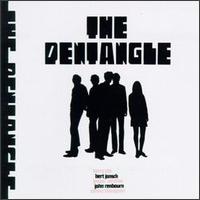
Pentangle
The Pentangle
(Transatlantic; 1968)
The debut album from folk supergroup Pentangle is a simple universal pleasure like enjoying the sun on your face or downing a long, cold glass of water. This is the sound of five ridiculously talented people enjoying their respective instruments: there’s no denying the skill of Bert Jansch and John Renbourn as fingerstyle guitarists, each securing an adoring following through solo careers and another great “other” album, 1966’s Bert and John, but they were joined by the excellent bassist Danny Thompson and drummer Terry Cox, who both set grounded yet complex, twisting rhythms. The fifth point of the star was Jacqui McShee, a bird-like high voice that soared and fluttered around Jansch’s earthier tones. By the first chorus of the traditional “Let No Man Steal Your Thyme,” Pentangle had secured their particular meld of folk, jazz, and rock enough to see them through the rest of their careers.
Having such faith in their individual skills allowed for crisp production; the listener can easily pick out individual guitar lines and even differentiate when Jansch and Renbourn are playing. It takes a certain amount of gutsiness to lay themselves so open to failure especially considering the trends for flanging, echo, feedback, and reverb that being ladled onto albums at the time, even with folk artists such as Donovan, but, despite testing labyrinthine instrumentals such as “Bells” and “Waltz,” everything is played with great ease and aplomb. McShee’s vocals too occasionally sound so effortless it’s as though she’s in a dreamworld. But where this may begin to sound like the nightmarish beginnings of prog (which in some ways comes through the adoption of jazzy inflections and tripping meter that would become their trademark), the album never strays too far into self-indulgent showboating.
A confident and assured album, it had the audacity to play with a furiously classicist genre (in folk) and yet at the same time set themselves apart from the, by then, established new wave of British folk stars Jethro Tull and Fairground Attraction.





